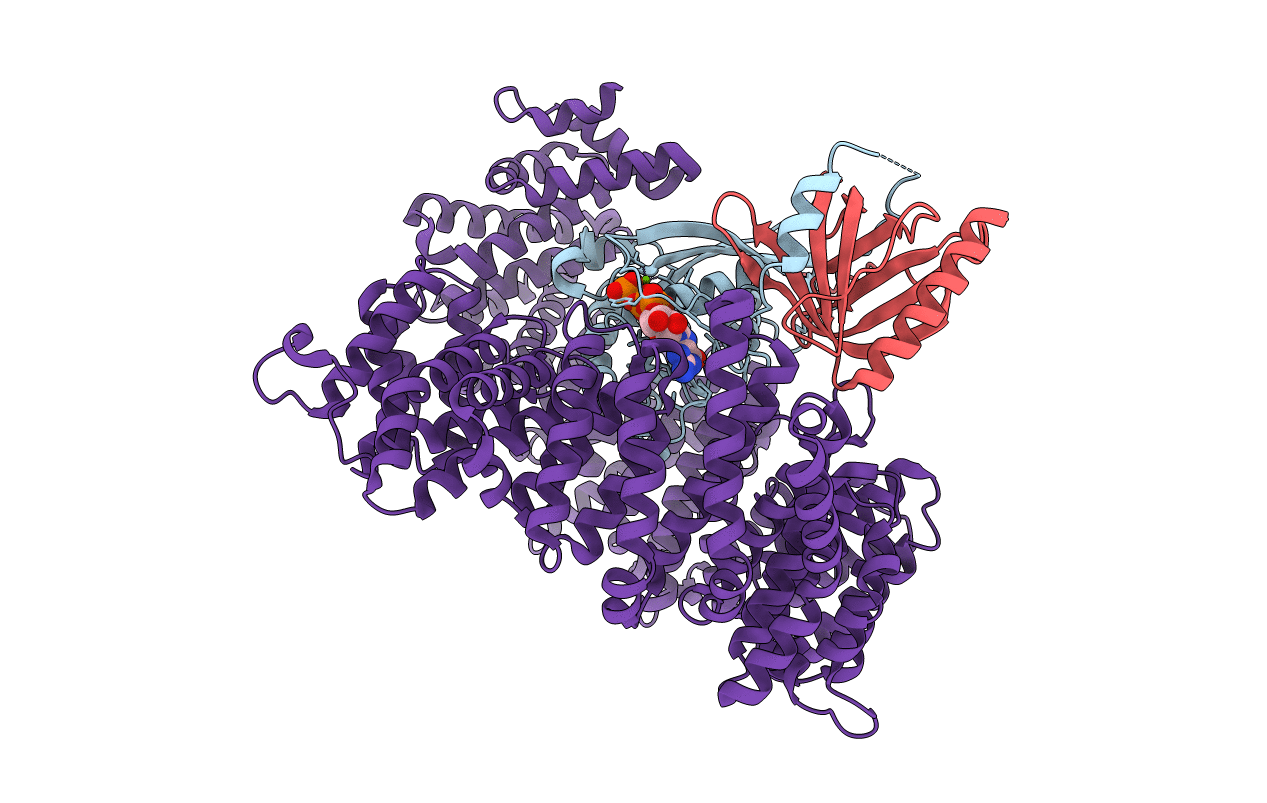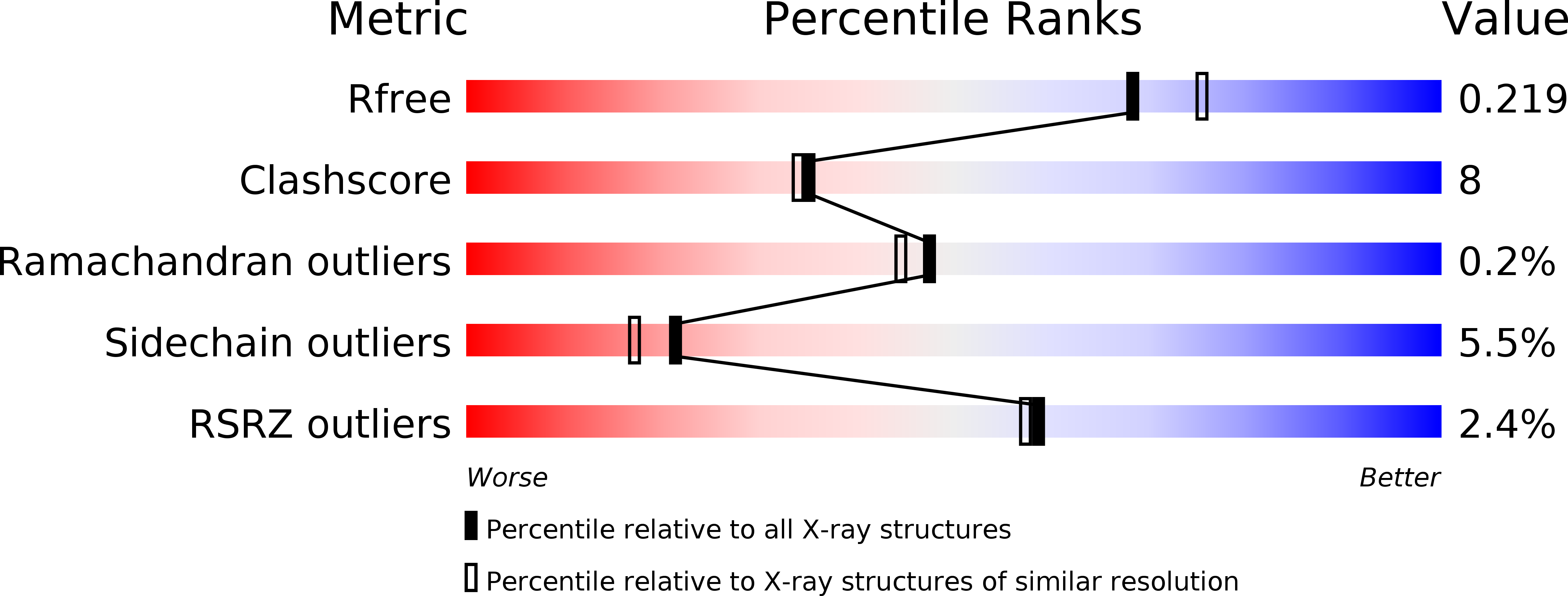
Deposition Date
2010-03-05
Release Date
2010-06-02
Last Version Date
2023-11-01
Entry Detail
PDB ID:
3M1I
Keywords:
Title:
Crystal structure of yeast CRM1 (Xpo1p) in complex with yeast RanBP1 (Yrb1p) and yeast RanGTP (Gsp1pGTP)
Biological Source:
Source Organism:
Saccharomyces cerevisiae (Taxon ID: 4932)
Host Organism:
Method Details:
Experimental Method:
Resolution:
2.00 Å
R-Value Free:
0.22
R-Value Work:
0.17
R-Value Observed:
0.17
Space Group:
P 43 21 2


